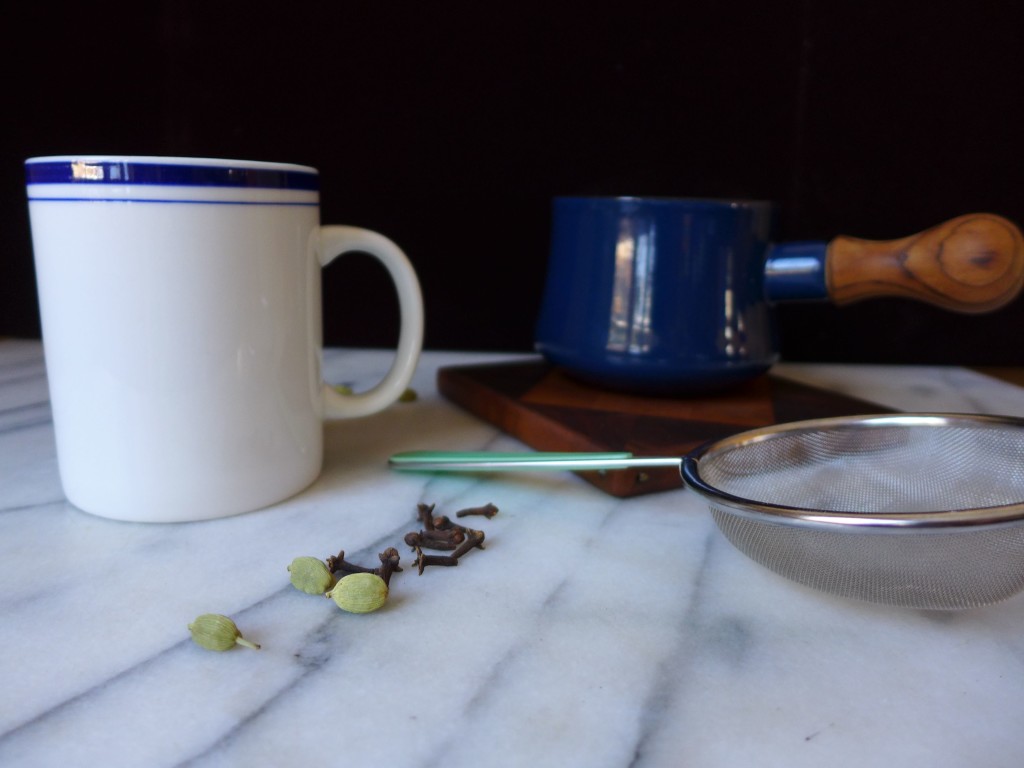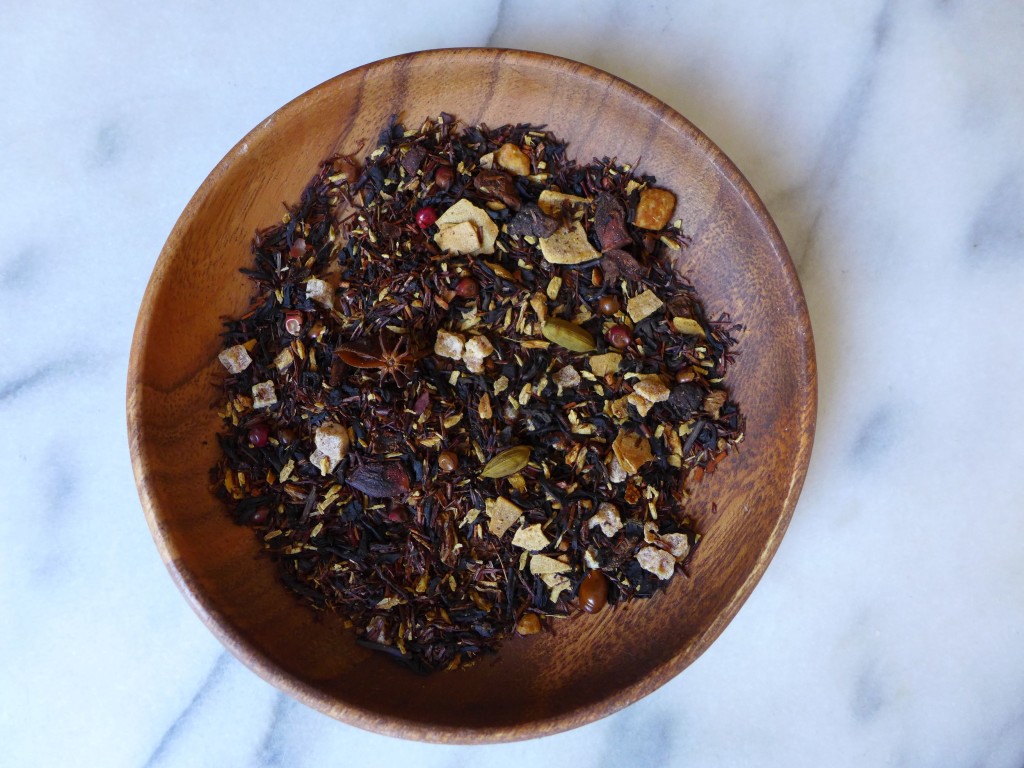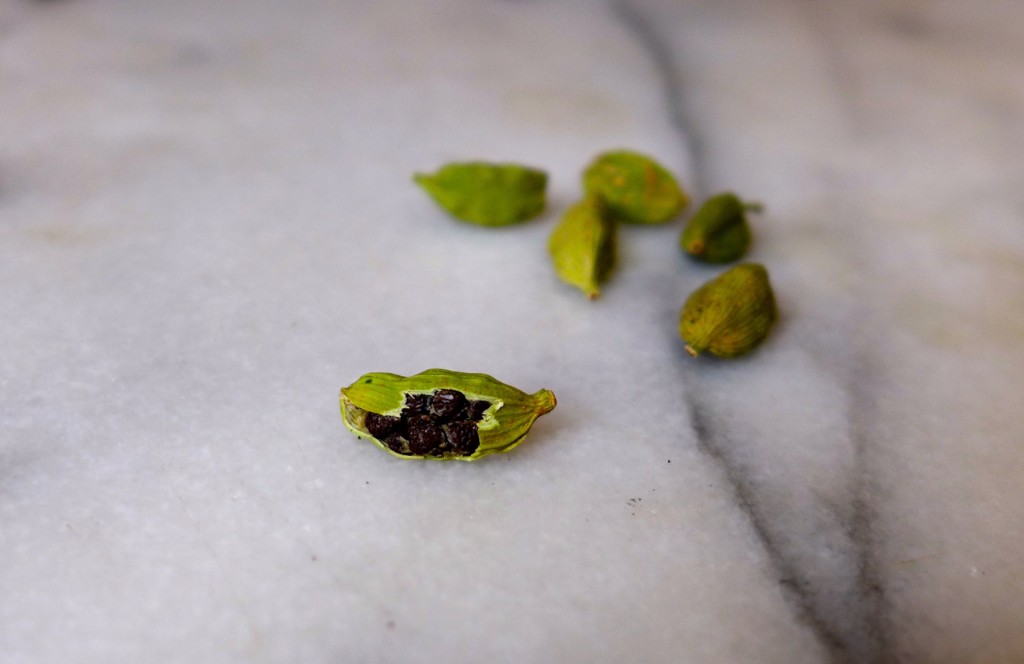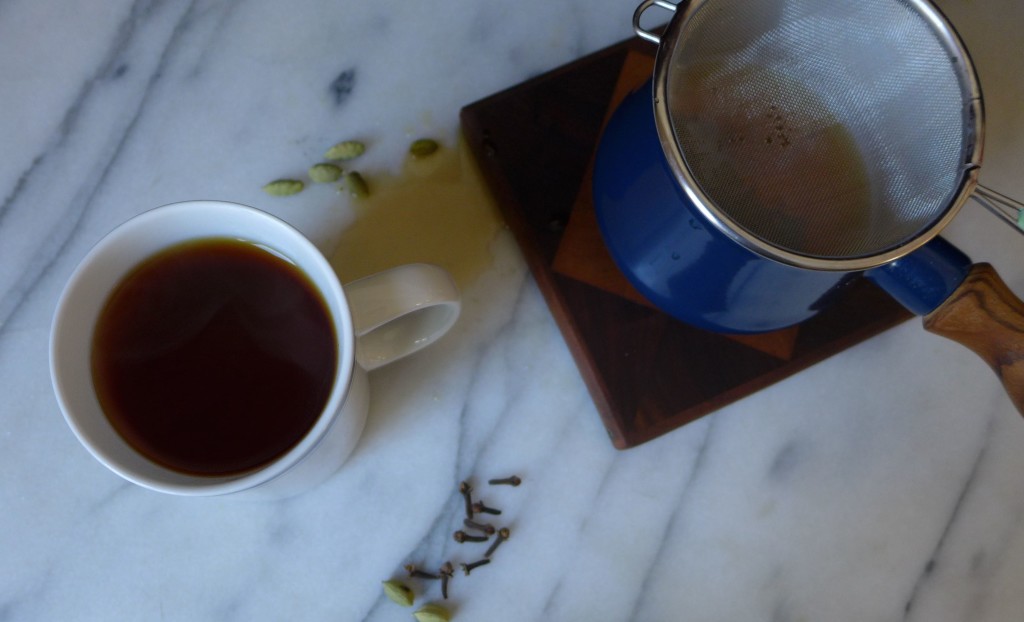Tea is our ingredient of the season this winter. We’re using that as an excuse to sit down more often and relax over a cuppa’. Also, if you find my talk of spices interesting, you may like this post where I use a karha mix to spice up our pumpkin popsicles.
I was stumbling over my computer keys this afternoon while starting this post because I keep wanting to just write chai, but I know that’s not correct, so let’s get some vocabulary out of the way and then get on with this post.
Chai is the word for tea in India. Masala means spiced or spice mix. So technically, when we Americans are drinking a “chai”, we’re really drinking a masala chai, a spiced black tea, not just a tea. Somewhere along the way we shorted masala chai to chai, and so I’ll stick with that abbreviation throughout this post, even though I’m focusing here on the masala. Or is it the karha?…
There’s nothing I like more than a warm cup of chai in my hands on a chilly winter afternoon. In the past I’ve always purchased either the concentrated liquid chai from the grocery store or tea shop’s chai blend for brewing. Today I want to share a beautifully simple and delicious chai recipe that you can use as the base for personalizing your cup of tea.
Traditional Karha
Another new word: karha. It’s the name for the spice blend used for making the masala chai. Traditionally, the karha begins with a combination of warming spices. This is commonly cardamom with some ginger, cloves, cinnamon, star anise, or nutmeg; all spices that we are familiar with when baking. In addition to those spices, some karha may include black pepper, fennel seeds, or coriander. You can also add spices like tumeric for their medicinal value. And those lists are not exhaustive, if there’s a spice you like, it’s fair game!
There are no hard and fast rules when it comes to the spice mixture. In India, the karha varies by region and even by the time of year. And likewise, outside of India, different regions of the world add different spices to their tea depending upon a region’s access to different spices and its palette.
Starter Recipe
Today’s recipe comes from my friend, Neha. She made it one afternoon and I was floored when I learned that there were only two spices in it : cardamom and cloves!
I’m calling this a starter recipe because it’s so simple. If you want the ability to make a homemade pot of chai during this weekend’s snowstorm, it’s likely that you have the ingredients on hand to create a delicious tea that will fill your craving for something warm and spicy. You’ll even be surprised at how complex it tastes given the short list of ingredients. The bottom line is that a simple karha makes a great chai.
Hints
This is my variation on the notes that Neha gave to me (we’re playing a big game of telephone here!).
For one serving of chai
- 8 oz of water
- 1 tsp of loose leaf black tea
- seeds of one green cardamom pod, crushed
- 1-2 cloves, crushed
Place all of the ingredients in a small sauce pot and brew at a low simmer for about 4 minutes. Strain, add milk and sugar to your taste, and enjoy!
If you’re doubling the recipe, double the amount of water and tea, but you do not have to change the spice quantity. As you go higher than two cups, you will want to play with the spice quantity, but it should increase at a lower rate than the water and tea.
~
I’ve made this a few times now and am always happy with it, but I’ve developed strong temptation to play with the karha. It’s the fiddler in me. I may start this afternoon by adding a touch of fresh ginger this afternoon. And I already have star anise and cinnamon sticks in the cupboard, so there’s a bit of potion-making to be done.
And that, I think, is the beauty of this recipe. Thankfully this is not a recipe that already calls for the addition of every spice under the sun. It’s simple and absolutely perfect, but it also gives you some wiggle room to play and get creative. Let us know what you come up with!
About Neha
Neha was born and raised in India. She now lives in Boulder, CO with her family and teaches Indian cooking classes in the mountains. Spend an afternoon in her class, and you’ll leave knowing how to cook a complete Indian meal at home, right down to the mango lassi. I did it, cooked a meal for Calder, and received rave reviews. It’s that good! If you’d like to learn more and sign up for a class, click here.





